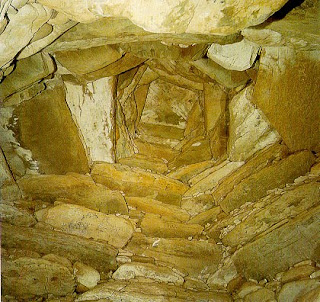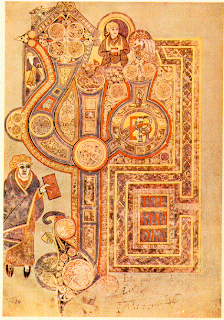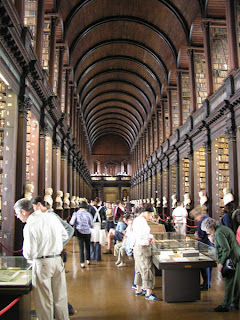The name Kilkenny kept reminding us of South Park and we would find ourselves randomly saying the line. They bus ride from Dublin passed through some of the greenest countryside we have ever seen. It is extremely rural, we were even delayed by a parade of over a hundred tractors coming the other way.
Our hotel was quite a ways outside of the main town. There were no buses that went along that route, so we hoofed it in and out of town for 45 minutes each way. The hotel was very nice and there was a Irish Breakfast buffet each morning to fuel our long journey into town.
Kilkenny like so many old towns sits along a river. This one was very picturesque and in the second photo you can see part of Kilkenny Castle.
Irish people must love to gamble, because even in this small town, we counted no less than ten different bookies. Ladbrokes is the big chain in the UK, but there were many smaller outfits everywhere we went and there were probably more.
Many times we passed by the Rothe House, but didn’t visit. It is a well preserved example of a 17th century Merchant’s townhouse with three interconnected buildings.
One of the smaller churches in the city is the Black Abbey. The church was founded in 1225 and has a lot of its original feature inside. Although it is now L-shaped after one wing of the church was dismantled. In the entrance courtyard of the church are these 13th century stone coffins that were unearthed during a restoration project.
We joined a walking tour of the city and got some great info to many parts of the city that we had already been (it’s a pretty small place). We met two great couples who were visiting from Gainesville, Florida. They were really nice and we ended up meeting up with them again later in the day. Pictured above is Butter Slip, an alleyway connecting two of the main streets of the city where butter used to be sold. Below, is the Kyteler Inn that was home to Dame Alice Kyteler who was charged as a witch after four of her husbands died mysteriously. She was a wealthy lady and paid off the church, her son also was freed from any charges, but her poor maid was not so lucky.
Kilkenny Castle was built in 1195 and expanded upon by Strongbow. You are able to see the original foundations and visit many of the rooms in the Castle. The Butler family, who’s job it was to pour the wine for the Royal Family, which is an important job if you fear getting poisoned, lived in the castle for 500 years. Most of the original furniture is gone because it was auctioned away, but some of it has made its way back either through donations, being willed, or purchases when they come on sale. There are several rooms with exterior windows where you can see how thick the walls are. There is an impressive which long room on the top floor with a nice collection of paintings and an original wooden roof.
The castle sits on a large plot of land along the river and there is a huge expanse of grass at the back. Originally, there was another side of the castle that created an interior courtyard, but Cromwell destroyed it, giving it its current three sided look.
We met up again with our new friends from Florida at the Smithwick’s brewery tour. This was different from the Guinness tour in several ways. One, we actually got to see the brewing process in action. Two, we had to brave the weather going from one building to the next. Thankfully we were provided with these lovely large umbrellas. Lastly, Smithwick’s has the over 700 year old St. Francis Abbey on its property.
The best part of every brewery tour is the pint at the end. Smithwick’s is a delicious red beer and our guide spent his time pouring a little beer at a time into each glass until they were all full.
Our last stop was visiting the St. Canice’s Cathedral. It has been a continuous place of worship for over 800 years. St. Kieran’s chair (below) was moved to the cathedral in 1120 and the ancient stone below the seat dates back to 400. It is used when the bishop of Ossory is enthroned.




